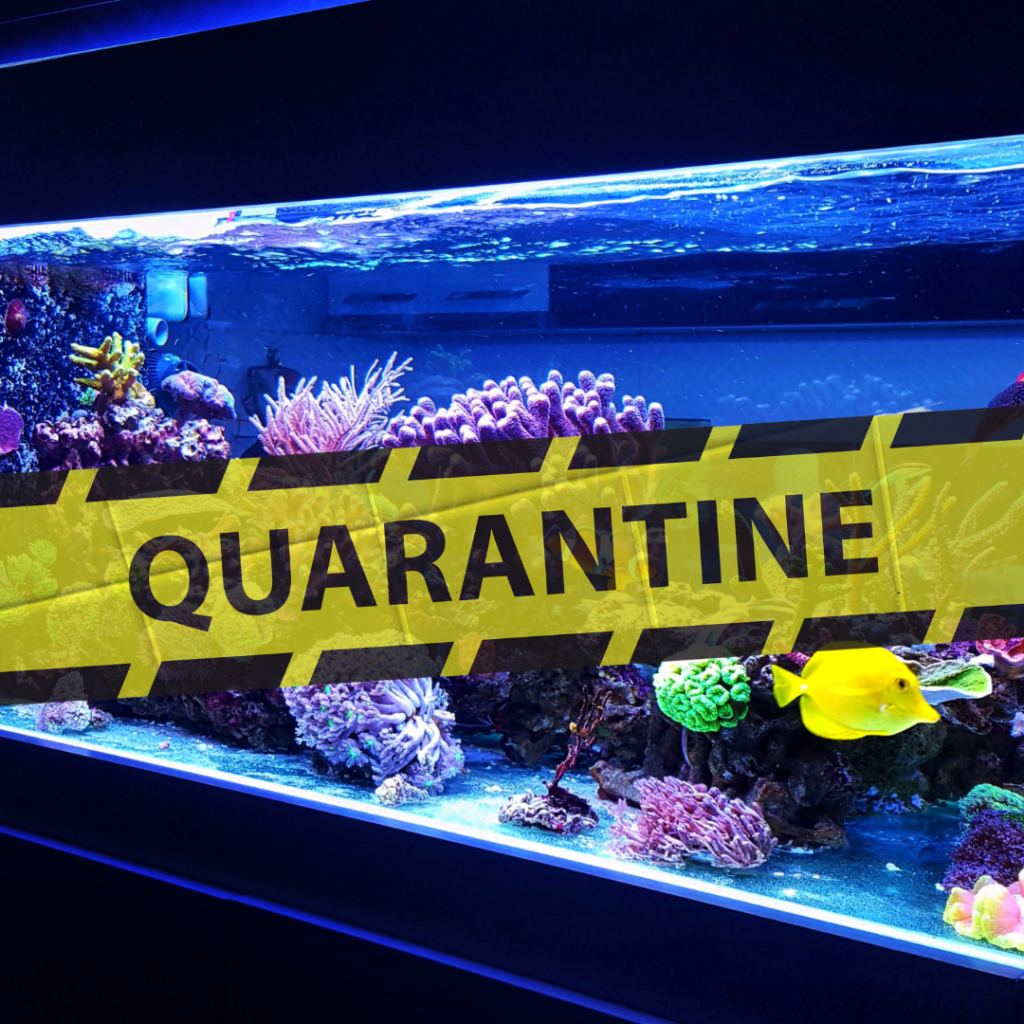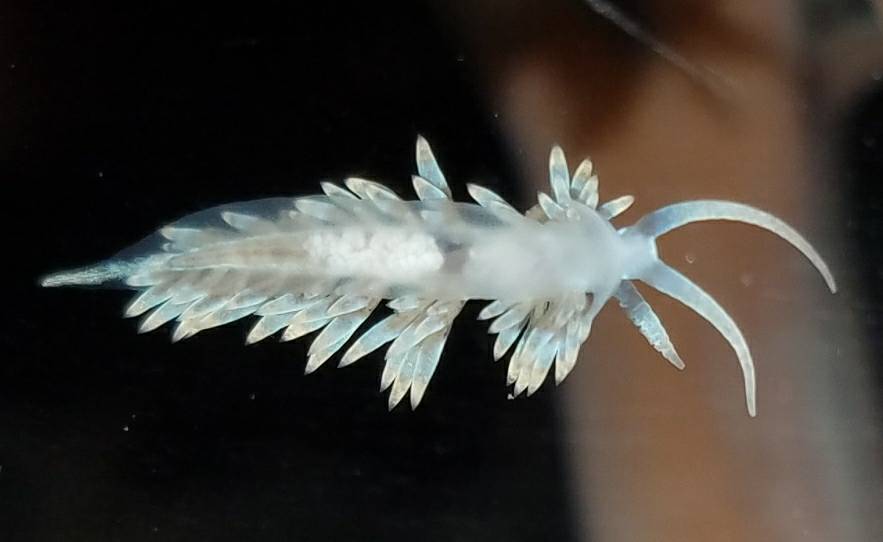As a dedicated saltwater aquarium enthusiast, the health and well-being of your marine life are of utmost importance. Among the myriad of threats to fish health, parasitic flukes on fish, also known as trematodes, present a notable concern. These insidious parasites can cause significant discomfort and health issues for your aquatic pets.
However, by employing a proactive and informed approach, you can prevent these unwelcome parasites from infesting your aquarium. The first line of defense in this battle against flukes in fish? A well-maintained quarantine tank.
what are Flukes?
Flukes, scientifically known as monogenean trematodes, are tiny, flatworm-like parasites that attach themselves to the gills, skin, and sometimes eyes of your fish.
They feed off the fish’s body fluids, causing irritation and distress. When present in large numbers, they can cause severe damage and even the death of your fish.
Therefore, understanding and preventing fluke infestations is a vital aspect of maintaining your aquarium’s health.
Related: Flukes In Saltwater Fish: How To Identify and Eliminate Them
How to identify Flukes
identifying external parasites, such as flukes, on a saltwater fish can be challenging because they are often small and may not be easily visible to the naked eye. However, there are some signs and symptoms that may indicate the presence of flukes or other external parasites on a fish:
- Abnormal Behavior:
- Excessive rubbing or flashing against objects in the aquarium.
- Frequent scratching or rubbing against the substrate.
- Changes in Appearance:
- Skin discoloration or dark spots.
- Abnormalities on the skin, gills, or fins.
- Respiratory Distress:
- Rapid gill movement or labored breathing.
- Frayed or Eroded Fins:
- Damage to the fins, which may appear frayed or eroded.
- Excessive Mucus Production:
- Increased mucus production on the skin or gills.
- Lethargy:
- Reduced activity and swimming less than usual.
lukes are flatworms, and they may appear as tiny, flat, oval or worm-like structures attached to the skin, gills, or fins of the fish.
WHat is a quarantine tank?
A quarantine tank—sometimes referred to as a hospital or isolation tank—is a standalone aquarium where new saltwater fish are temporarily housed before introducing them to the main tank.
This concept is not exclusive to new arrivals; it also serves as a crucial intervention point for treating sick fish, thereby preventing potential outbreaks in your main aquarium.
The principle of a quarantine tank is simple, yet its impact on preventing flukes and other illnesses in saltwater tanks is profound. By providing an isolated environment, the quarantine tank allows for close observation of new fish for signs of illness, like the presence of flukes, before they join the rest of your aquarium community.
Additionally, it offers a controlled environment for effective treatment if parasites or diseases are detected.
how to set Up a Quarantine Tank
The process of setting up a quarantine tank is straightforward and an essential investment for the long-term health of your saltwater aquarium. While it doesn’t require the same level of complexity as your main tank, certain key elements are necessary to ensure it serves its purpose effectively.
These include proper filtration, heating, and lighting, along with a simple hiding place for the fish to reduce stress.
The size of the quarantine tank can vary based on your needs and the size of the fish, but typically, a 10-30 gallon tank works well for most hobbyists. The key is to mimic the conditions of your main tank as closely as possible—stable water parameters are crucial for reducing stress on your fish, which in turn bolsters their immune system against parasites like flukes.
Steps to setting up a quarantine tank:
- Choose an Appropriate Tank: Select a quarantine tank that’s adequate for the size and number of fish. A 10-30 gallon tank usually suffices for most small to medium saltwater fish.
- Setup Filtration: Install a sponge filter or a hang-on-back filter. They provide biological filtration and don’t create intense currents.
- Heater Installation: Use an aquarium heater to maintain the temperature. Aim for 76-82°F (24-28°C), which suits most marine species.
- Ensure Adequate Aeration: Add an air stone or ensure your filter disrupts the water surface for oxygen exchange.
- Add Saltwater: Fill the tank with pre-mixed marine saltwater. Ensure salinity matches that of your main tank, usually between 1.021 and 1.026 specific gravity.
- Cycle the Tank: Allow the tank to cycle to establish beneficial bacteria before introducing any fish. Use filter media or substrate from your main tank to expedite this process.
- Provide Hiding Spaces: Include PVC pipes or non-toxic aquarium decorations for the fish to hide in, but avoid live rock due to its porous nature which can harbor parasites.
- Cover the Tank: Use a tank lid or net cover to prevent fish from jumping out.
- Monitor Water Parameters: Regularly check water conditions (ammonia, nitrite, nitrate, pH, salinity, temperature) and make necessary adjustments.
- Acclimate Your Fish: Gradually acclimatize your fish to the quarantine tank conditions to minimize stress, using the drip acclimation method for best results.
- Maintain Regularly: Perform regular maintenance including water changes and monitor fish health.
Remember, the goal of a quarantine tank is to create a secure, stress-free environment for observation and treatment, if necessary, not to replicate the complexity and aesthetics of your main tank.
QUARANTINING a fish with flukes:
Quarantining a fish that you suspect has flukes is a crucial step in ensuring the health and longevity of your entire marine aquarium. To start, if you have confirmed your saltwater fish is affected by flukes, you’ll need to have a quarantine tank ready. The quarantine tank should have the same water parameters as the main tank to ease the transition for the sick fish.
Transferring the Fish and Starting Treatment
Capture the fish gently to avoid causing additional stress and transfer it into the quarantine tank. Once safely in the quarantine tank, it’s time to start the anti-parasitic treatment. You can use medications specifically formulated to combat flukes, like Prazipro. Be sure to follow the manufacturer’s instructions for the appropriate dosage and treatment length.
Observation and Water Testing
During the treatment phase, closely observe your fish’s behavior and physical condition. Do not stop the treatment until the full course is complete, even if the fish shows signs of improvement before the treatment ends. Regular water testing during this time is of paramount importance because the water quality in smaller tanks can quickly deteriorate, leading to additional health issues for the already stressed fish.
Water Changes During Quarantine
Water changes are also vital during the quarantine period, especially when dealing with medicated water. Carry out weekly water changes of about 25% volume or more if the water tests indicate the need for it. When performing these changes, remember to add the correct dosage of medication to the new water to maintain the appropriate concentration.
Returning the Fish to the Main Tank
Once your fish has gone through the complete treatment course and you’ve observed no further signs of flukes for at least a week, you can consider returning the fish to the main tank. This step must not be rushed, as reintroducing flukes into the main tank could lead to a larger outbreak.
The Importance of Preventive Quarantine
Lastly, always remember the importance of preventive quarantine. It’s always wise to place new fish in a quarantine tank before introducing them into your main display tank. This practice allows you to monitor the new arrivals for any diseases or parasites, like flukes, that could harm your established marine community.
4 Best Natural Ways to Get Rid of Flukes In Fish
Frequently Asked Questions about Quarantining for Flukes
1. How long should I quarantine a new fish to check for flukes?
Typically, a quarantine period of 4-6 weeks is recommended to observe new fish for any signs of flukes or other diseases. This period allows enough time for any parasites to become apparent.
2. Can flukes spread to other fish in my quarantine tank?
Yes, flukes can spread from one fish to another in the close confines of a quarantine tank. It is recommended to quarantine and treat each new fish individually.
3. Do I need to disinfect my quarantine tank after treating a fish with flukes?
Yes, it is important to thoroughly clean and disinfect your quarantine tank after it has housed a fish with flukes to prevent future infestations. Follow disinfection with a full cycle to reestablish beneficial bacteria before introducing another fish.
4. What should I do if my fish shows no improvement after treatment?
If your fish shows no improvement after the recommended course of treatment, consult with a marine veterinarian or experienced aquarist. The fish may be suffering from another condition, or a different treatment may be needed.
5. Can I use my quarantine tank for other purposes when it’s not in use?
It’s recommended to keep your quarantine tank empty and ready for immediate use. Using it for other purposes can introduce organisms that could potentially harm a quarantined fish.
Conclusion
Flukes can present a significant threat to the health of saltwater fish. However, through the establishment of a quarantine tank, careful observation, and proactive treatment, the risk of a fluke infestation in your aquarium can be greatly reduced. Always remember, preventative measures are the best way to maintain the health and vibrancy of your marine aquarium. Happy fish keeping!
Read next: Best Treatment for Flukes in Fish (Most Effective Method 2023)



